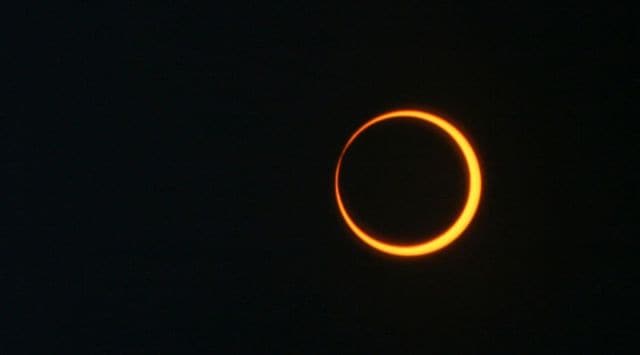NASA to fly rockets into October 14 solar eclipse’s shadow
As parts of the world get plunged into partial darkness during the October 14 annular solar eclipse, NASA will send rockets flying into the shadow of the eclipse.
 This is how an annular eclipse will look. (NASA)
This is how an annular eclipse will look. (NASA) On October 14, people in many parts of North and South America will see the Sun dimming to about 10 per cent of its normal brightness, leaving only a bright “ring of fire” as the annular eclipse happens. But those near the White Sands Missile Range in New Mexico will also notice sudden bright streaks in the sky hurtling towards the eclipse—three rockets that NASA plans to launch.
The space agency’s sounding rocket mission will launch three rockets to learn how the sudden drop in sunlight affects our planet’s upper atmosphere. The mission is called Atmospheric Perturbations around the Eclipse Path or APEP. The ionosphere is the ionised part of the atmosphere which is found between 48 kilometres to 965 kilometres above sea level.
That is the part of the atmosphere where UV radiation from the Sun separates electrons away from atoms to form ions and electrons. The constant energy from the Sun keeps these particles, which are mutually attracted, from separating throughout the day. But as the Sun dips below the horizon, they may recombine into neutral atoms. They are then once again ionised at sunrise.
During a 2017 total solar eclipse that was visible in North America, many instruments, even those that were hundreds of kilometres outside the path of the eclipse, detected atmospheric changes. This was also the case with important infrastructure like GPS and communication satellites that we use every day. This is because all satellite communication passes through the ionosphere.
As we become more and more dependent on space-based assets like that, it is important to understand and model any disturbances to the ionosphere and what effect they can have.
The APEP mission will launch three rockets—the first will be launched about 35 minutes before the peak eclipse, one during the peak and the last one about 35 minutes after. Each rocket will deploy four small scientific instruments that will measure density, temperature, and changes in electric and magnetic fields.







